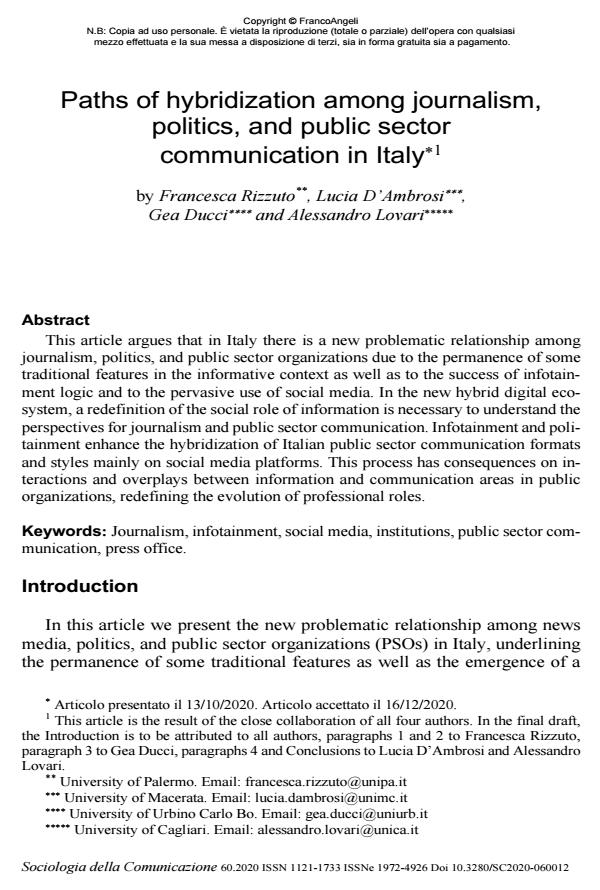Paths of hybridization among journalism, politics, and public sector communication in Italy
Titolo Rivista SOCIOLOGIA DELLA COMUNICAZIONE
Autori/Curatori Francesca Rizzuto, Lucia D’Ambrosi, Gea Ducci, Alessandro Lovari
Anno di pubblicazione 2021 Fascicolo 2020/60
Lingua Inglese Numero pagine 17 P. 137-153 Dimensione file 351 KB
DOI 10.3280/SC2020-060012
Il DOI è il codice a barre della proprietà intellettuale: per saperne di più
clicca qui
Qui sotto puoi vedere in anteprima la prima pagina di questo articolo.
Se questo articolo ti interessa, lo puoi acquistare (e scaricare in formato pdf) seguendo le facili indicazioni per acquistare il download credit. Acquista Download Credits per scaricare questo Articolo in formato PDF

FrancoAngeli è membro della Publishers International Linking Association, Inc (PILA)associazione indipendente e non profit per facilitare (attraverso i servizi tecnologici implementati da CrossRef.org) l’accesso degli studiosi ai contenuti digitali nelle pubblicazioni professionali e scientifiche
This article argues that in Italy there is a new problematic relationship among journalism, politics, and public sector organizations due to the permanence of some traditional features in the informative context as well as to the success of infotainment logic and to the pervasive use of social media. In the new hybrid digi-tal ecosystem, a redefinition of the social role of information is necessary to un-derstand the perspectives for journalism and public sector communication. Info-tainment and politainment enhance the hybridization of Italian public sector communication formats and styles mainly on social media platforms. This process has consequences on interactions and overplays between information and com-munication areas in public organizations, redefining the evolution of professional roles.
Parole chiave:Journalism, infotainment, social media, institutions, public sector communication, press office.
- Party or policy? Examining news consumption and affective polarization in Italy David Coppini, in Contemporary Italian Politics /2025 pp.1
DOI: 10.1080/23248823.2025.2469428
Francesca Rizzuto, Lucia D’Ambrosi, Gea Ducci, Alessandro Lovari, Paths of hybridization among journalism, politics, and public sector communication in Italy in "SOCIOLOGIA DELLA COMUNICAZIONE " 60/2020, pp 137-153, DOI: 10.3280/SC2020-060012